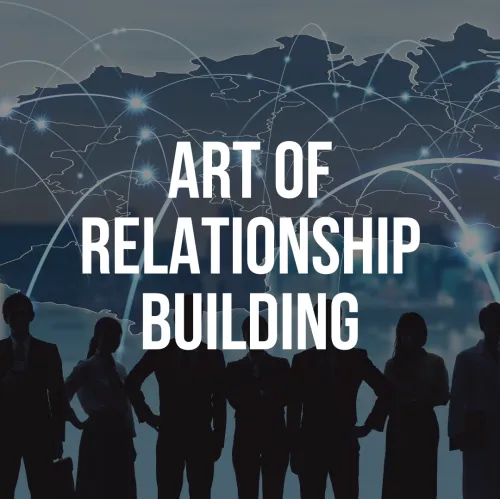Communication 360°
A leader is someone who inspires positive, incremental change by empowering those around them to work toward common objectives. A leader’s most powerful tool for doing so is communication. However effective communication in order to achieve greatness may not necessarily be in one direction – Top to Bottom! We tend to think of organizations like a ladder because they have a natural hierarchical structure. It’s an apt comparison — but one that’s completely misunderstood. Why? Because with a ladder, everything important is at the bottom, and the hard part is getting it to the top. It’s a bottom-up effort. Many organizations operate as if the reverse was true; information and guidance flow from top to bottom and only move in one direction. That kind of approach makes sense when a company needs to rally the troops or articulate a bold strategy, especially during times of crisis. However, it’s the wrong approach for leadership, communications, and company culture to take at all times. Like a ladder, things must move in two directions — otherwise, the structure falls apart. Effective communication is vital to gain trust, align efforts in the pursuit of goals, and inspire positive change. When communication is lacking, important information can be misinterpreted, causing relationships to suffer and, ultimately, creating barriers that hinder progress.
LEARNING OUTCOMES
At the end of this two days course, participants will be able to discover the critical importance of communication to gain trust, align efforts in the pursuit of goals and inspire positive change. They will deeply understand that when Communication is lacking, important information can be misinterpreted causing working relationship to suffer and ultimately, create barriers that hinder progress.
KEY CONTENT
Module 1: Introduction to Communication
- What is Communication?
- Critical Importance of Communication 21st Century Leadership
- Identifying and Breaking Down Communication Barriers
- Adapting to Individual Communication Styles
Module 2: Active Listening
- Barriers to Listening
- Why Listening is more important Talking?
- Improving Our Listening Skills – Types of Listening
- Become an Expert Active Listener.
Module 3: Effective Verbal Communication
- Key Components of Verbal Communication
- Barriers to Effective Verbal Communication
- Transparency and Clarity in Verbal Communication.
- Ability to Ask Open-Ended Questions.
Module 4: The Urgency for Bottom-Up Communication
- The benefits of a Bottom-Up Approach
- Enlisting Ideas from Everywhere
Module 5: 360 Communication
- Communicating with Bosses – Understanding the psychology of bosses
- Communicating with Peers – Influence techniques applied
- Communicating with Employees – The language of affirmation
- Communicating with Customers – Making them feel important
- Communicating with Suppliers – Making them feel valued
Module 6: Reading Body Language:
- How can we Decipher Body Language?
- Importance of Non-Verbal Communication
- What should you believe More?
Module 7: Empathy in Communication
- What is Empathy?
- Why Empathy is a Critical Element?
- Effective Leadership needs Empathy.
TARGET AUDIENCE
Associates, Executives, Team Leaders, Supervisors, and Managers.
METHODOLOGY
Highly interactive lectures, videos, group deliberations, demonstrations, games, self-analysis, and exercises.
Inquiry - Communication 360°











